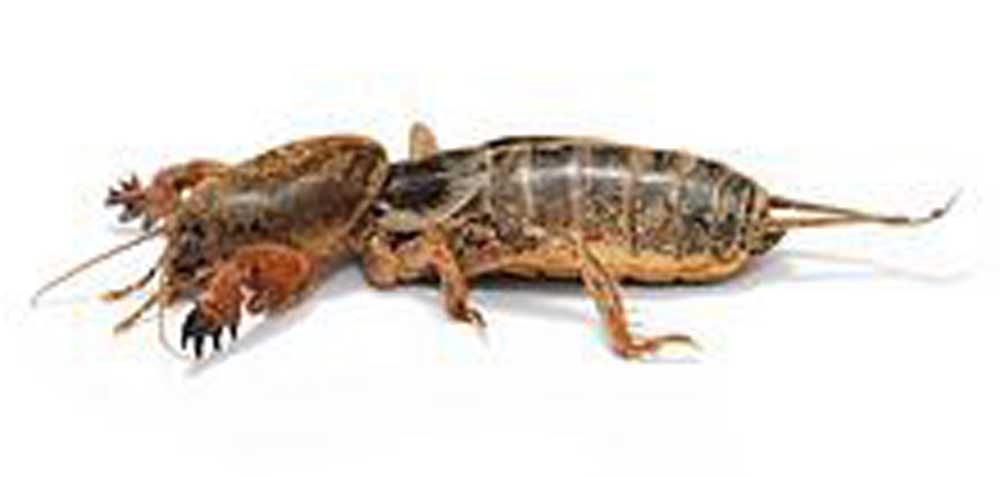Master Gardener: Most southern mole crickets overwinter as nymphs
Published 12:48 pm Wednesday, October 26, 2022

- Cricket
Ah, summer nights and the soothing melodic sounds of crickets. Another sound is mixed into the melody. The song is almost pure tone, modulating into chirps. Could it be a southern mole cricket (Orthoptera, Scapteriscus.sp)? The sound is soothing. The tonal-modulated chirps from the underground male are trying to attract females during the breeding season, or indicating a favorable area for her to lay her eggs. Dead spots reveal the grass, garden and pasture are being damaged. Look closely at the thatch, bare ground and dying plants for small mole-like tunnels about the size of a finger just below ground level.
The mole cricket is a member of the family Orthoptera comprising moles, crickets, grasshoppers. It has a mole like head, fore legs with claws, a pronotum or shield like structure behind the head, long thin antennae and beady eyes. The fore legs are flattened for digging and the rear legs are somewhat cricket like. They burrow just under the surface of the soil. Their lifecycle is egg, nymph, adult. Males can but infrequently fly, females fly and disperse during the mating season of June to September in East Texas.
Trending
The southern mole cricket is more widely distributed geographically across the state than the tawny mole cricket. Southern mole crickets are established east of a line from Corpus Christi to San Antonio to Fort Worth, and south of I-20 in most of East Texas.
Accidentally introduced to the Southeastern United States during the early 20th century were three species of South American mole crickets (short-winged mole cricket, tawny mole cricket and southern mole cricket) two of which spread across the coastal area of the United States from North Carolina to Texas. By the mid-1900s they were causing widespread losses to agriculture. Pastures and other grasslands along with vegetable crops were particularly vulnerable to the mole cricket’s habit of burrowing and feeding on roots, tubers and insects. The burrowing disrupts root systems of turf grasses allowing roots to dry out.
IPM, Integrated Pest Management, seeks ways of pest prevention, pest reduction and eliminating conditions leading to pest infestation. It is suggested, instead of chemical management and the resulting eco-system consequences, that natural enemies of the mole cricket be introduced. Enemies include a species of parasitic wasp, the same natural predator to the horned tomato worm, beetles, birds and the assassin bug, a gardener’s friend, among others.
Most southern mole crickets overwinter as nymphs. Early scouting is essential for control. Start scouting when nymphs are small in early May-July. A soapy water flush of one tablespoon of lemon-scented dishwashing soap in one gallon of water poured over a suspected area. This solution will irritate the nymphs causing them to rise to the surface for counting and identification. Natural and chemical remedies are available. As usual, follow labelled instructions.
For more information, consult AggiTurf.tamu.edu/turfgrass-insects/mole-cricket and TexasInsects.tamu.edu/turfgrass-insects/mole-cricket, also IPM.tamu.edu for more information.






